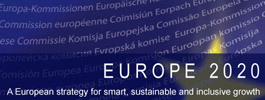by Andrzej Rys, Director for Health Systems, Medical Products and Innovation, DG Health and Food Safety, European Commission

European citizens deserve medicines that are safe, of high quality and effective. Falsified medicines may contain ingredients of low quality or in the wrong dosage – and therefore pose a major health threat to EU citizens. The Falsified Medicines Directive – in force since January 2013 – aims at making medicines safer. To this end, it mandates the Commission to set out measures to verify medicine authenticity and improve the quality of medicine ingredients.
On 9th February, the Commission published the Delegated Regulation on the safety features for medicines for human use – the last, but certainly not the least of several legislative measures the Commission set out to implement the Falsified Medicines Directive.
The Regulation introduces medicine authentication by means of two safety features – a unique identifier and an anti-tampering device – to protect patients from the risks of falsified medicines and the consequences of common dispensing errors. The unique identifier – a unique code which identifies a given pack of medicine – is encoded in a 2D barcode and can be read by common scanners. The anti-tampering device ensures that the medicine pack has not been opened and tampered with.
The Regulation also details how medicine authenticity should be verified and by whom. Medicine authenticity is guaranteed by an end-to-end verification system supplemented by risk-based verifications by wholesalers. Medicines are systematically verified at the point of supply to the public (e.g. at the pharmacy). Medicines at higher risk of falsification (returned medicines or medicines not being distributed directly by manufacturers, marketing authorisation holders or people acting on their behalf) are additionally checked at wholesale level. Medicine authenticity is ensured by checking the unique identifier on a given pack against a pool of legitimate unique identifiers stored in a repositories system, which will be set up and managed by stakeholders under the supervision of national competent authorities.
As a direct result of the Regulation, applicable as of 2019, medicines will be systematically authenticated before being supplied to patients, preventing not only the dispensing of falsified medicines but also other common errors such as the accidental dispense of expired or recalled medicines. In addition, the European pharmaceutical supply chain will be digitalised, with a repositories system connecting manufacturers, wholesalers, pharmacists and hospitals. This will improve information flows and facilitate medicine recall and return procedures.
Overall, the Regulation is a big step forward for the safety of EU medicines and the protection of public health in the EU.







